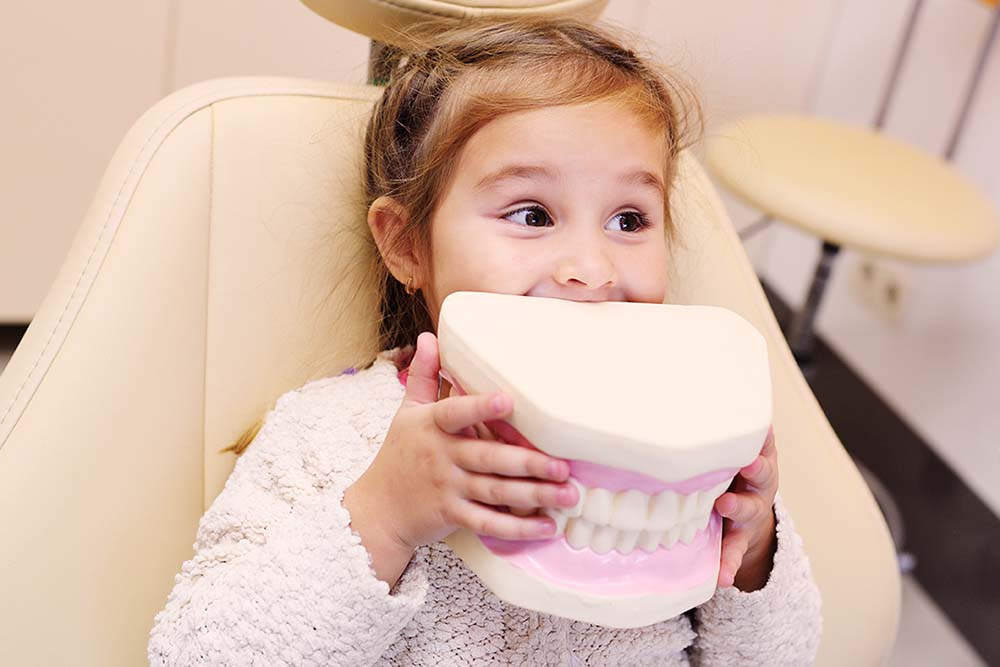It is important to establish lifelong oral health attitudes with your child when they are young. By getting your child on a regular exam schedule, you teach them to see the dentist’s office as an important and welcoming place, and help them learn how to care for their teeth for the rest of their lives.
WHEN SHOULD MY CHILD FIRST VISIT THE DENTIST?
Kids should get their first oral exam as soon as their first tooth comes in or by their first birthday. Our team will give you advice about how to care for your child’s early teeth. As your child gets older, he or she should have dental checkups as often as the dentist advises. Most dentists recommend a dental visit every six months to help prevent cavities and other problems. Talk with your child’s dentist about the schedule that is best for your child.
WHAT ARE SOME TIPS TO HELP MY CHILD FEEL MORE COMFORTABLE?
It’s perfectly normal to have fears, especially for children. It can help tremendously when both the parents and their dentist communicate and work together to make a dental visit go more smoothly. Here are a few ways to help your child feel more comfortable at the dentist.
•Tell your child in advance that they have a dental visit, and answer any questions they may have.
•Explain that dentists are superheros for their teeth. Visits to the dentist are part of the routine to keep your teeth strong and healthy for life.
•Play Dentist at home. Try acting out a dental exam, so your kids feel more prepared and excited when they visit the real dentist.
FLOURIDE TREATMENT
As plaque accumulates on the teeth, the bacteria in this sticky substance draw minerals, including fluoride, out of your tooth enamel. These minerals are what keep the enamel hard; without them, the teeth are more susceptible to decay. While a healthy diet can help to replenish lost fluoride, it is often insufficient. Regular fluoride treatments give your teeth a boost and reverse the demineralization process to keep your enamel hard and bright.
SEALANTS
Dental sealants are thin coatings that when painted on the chewing surfaces of the back molars have been proven to prevent cavities for many years. Sealants protect the chewing surfaces from cavities by covering them with a protective shield that blocks out plaque and food residues from getting trapped in the ridges and depressions of teeth.
DENTAL SEALANTS PROCEDURE
The procedure begins with a cleaning to remove food residues and plaque from the teeth. The material is then applied as a putty-like substance and it is allowed to harden while being kept dry. It is a fairly quick process and is recommended, especially in children and adolescents to help fight tooth decay and prevent cavities. According to the American Dental Association, sealants on permanent molars reduce the risk of cavities by 80%.

